Like As Not
Metaphor implies repetition with a difference. A catalog might then also be an extended metaphor.
This post is an open-ended, self-organizing catalog of catalogs, categories, associations, and tropes.
Seven Types of Ambiguity
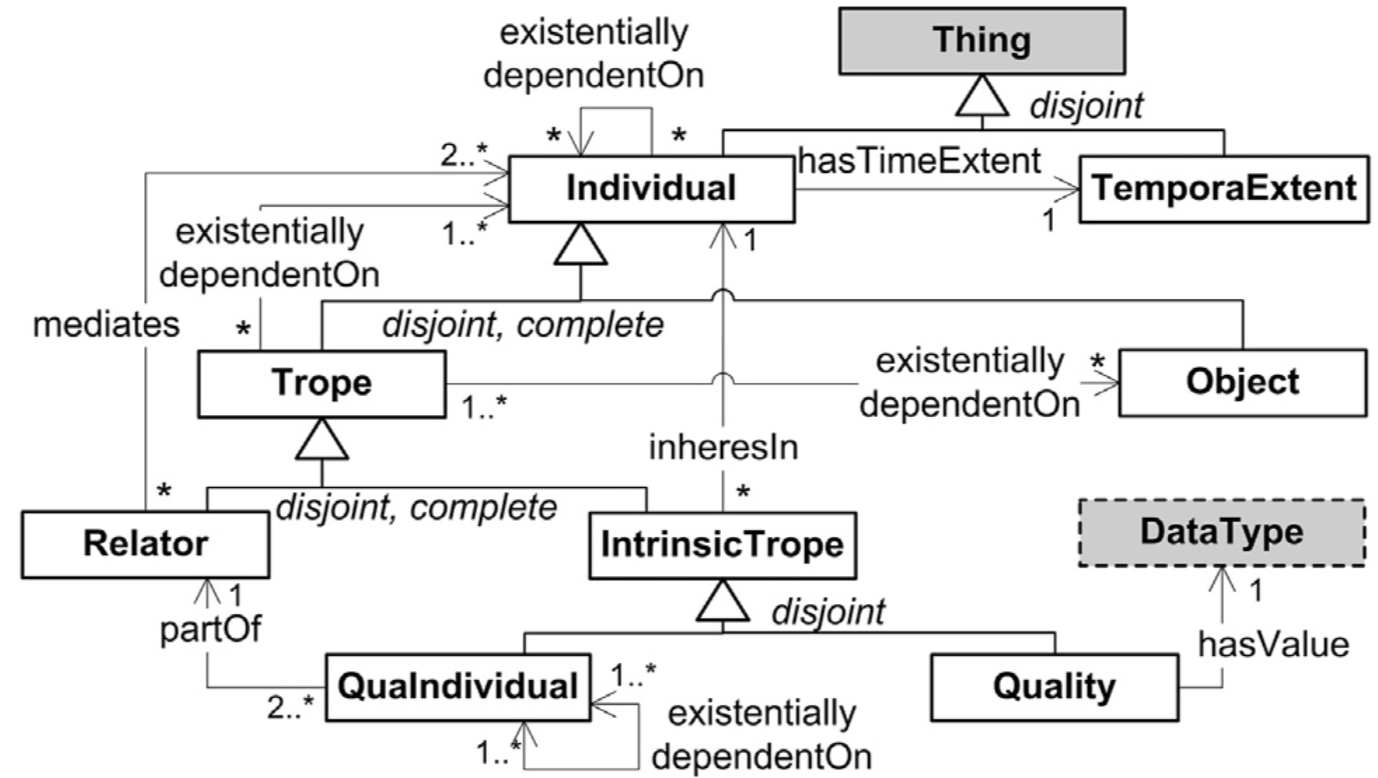
- Type 1: a detail effective in several ways at once
- Type 2: two or more alternative meanings resolve into one
- Type 3: two apparently unconnected meanings are given simultaneously
- Type 4: alternative meanings combine to make clear a complicated state of mind in the author
- Type 5: a fortunate confusion
- Type 6: what is said is contradictory or irrelevant and the reader is forced to invent interpretations
- Type 7: full contradiction, marking a division in the author’s mind
(W. Empson, 1949.)
Catalog of Aspirations
A review of David Clark’s book, Designing an Internet, mentions his Catalog of Aspirations. This manifold of metrics first appears in his 2015 paper with kc claffy, An Inventory of Aspirations for the Internet’s future.
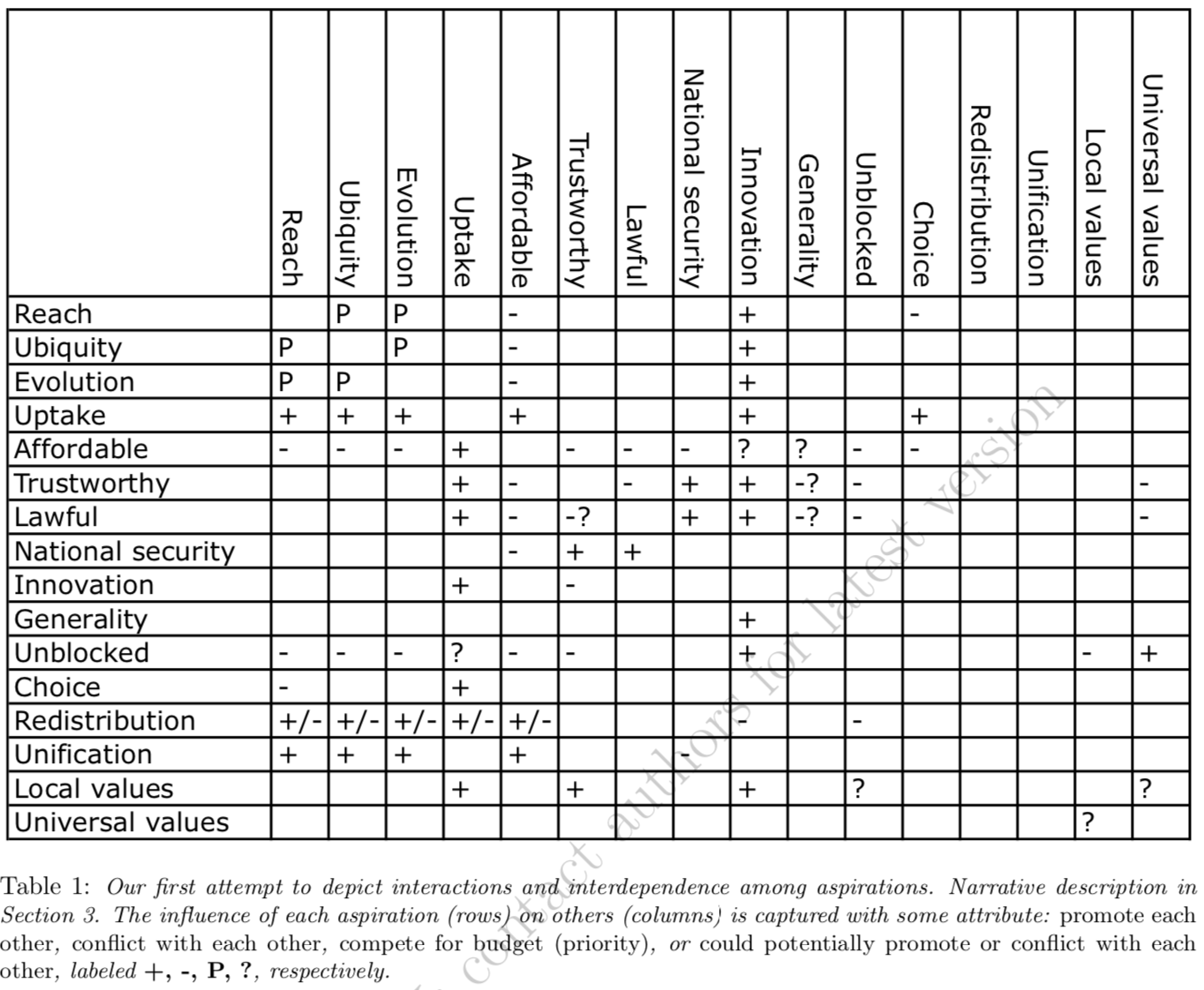
The 17th, Global doesn’t appear in the original list. Composition has always been a theme in Internet design, even as it moves from layers with distinct networking constraints to layers that are self-contained networks. And yet:
- Are utility maximization and simplicity of network management the organizing principles of layering? If virtual network embedding
becomes a dynamic problem, a network utility function can capture the quality and constraints of embedding. - Is it that the end-to-end principle has been so successful that it repeated itself - as self-contained, independent networks - and defied the globalization of any specific instance of the concept?
- Under what conditions would a particular instance of the end-to-end principle maximize ubiquity? A strategic game or evolutionary selection mechanism?
Creative, Interactive, Communication
J. C. R. Licklider and R. Taylor’s 1968 paper, The Computer as a Communication Device combines elements of a manifesto, a sci-fi short story, and a user manual:
- “Creative, interactive communication requires a plastic or moldable medium that can be modeled…”
- “access both to informational resources and to the processes for making use of the resources”
- “When mental models are dissimilar, the achievement of communication might be signaled by changes in the structure of one of the models, or both of them”
- “Interactive communication consists of short spurts of dialog”
- “dictionaries, encyclopedias, indexes, catalogues, editing programs, teaching programs, testing programs, programming systems, data bases, and—most important—communication, display, and modeling programs”
- “an infinite crescendo of on-line interactive debugging”
The Complex, The Changing and the Indeterminate
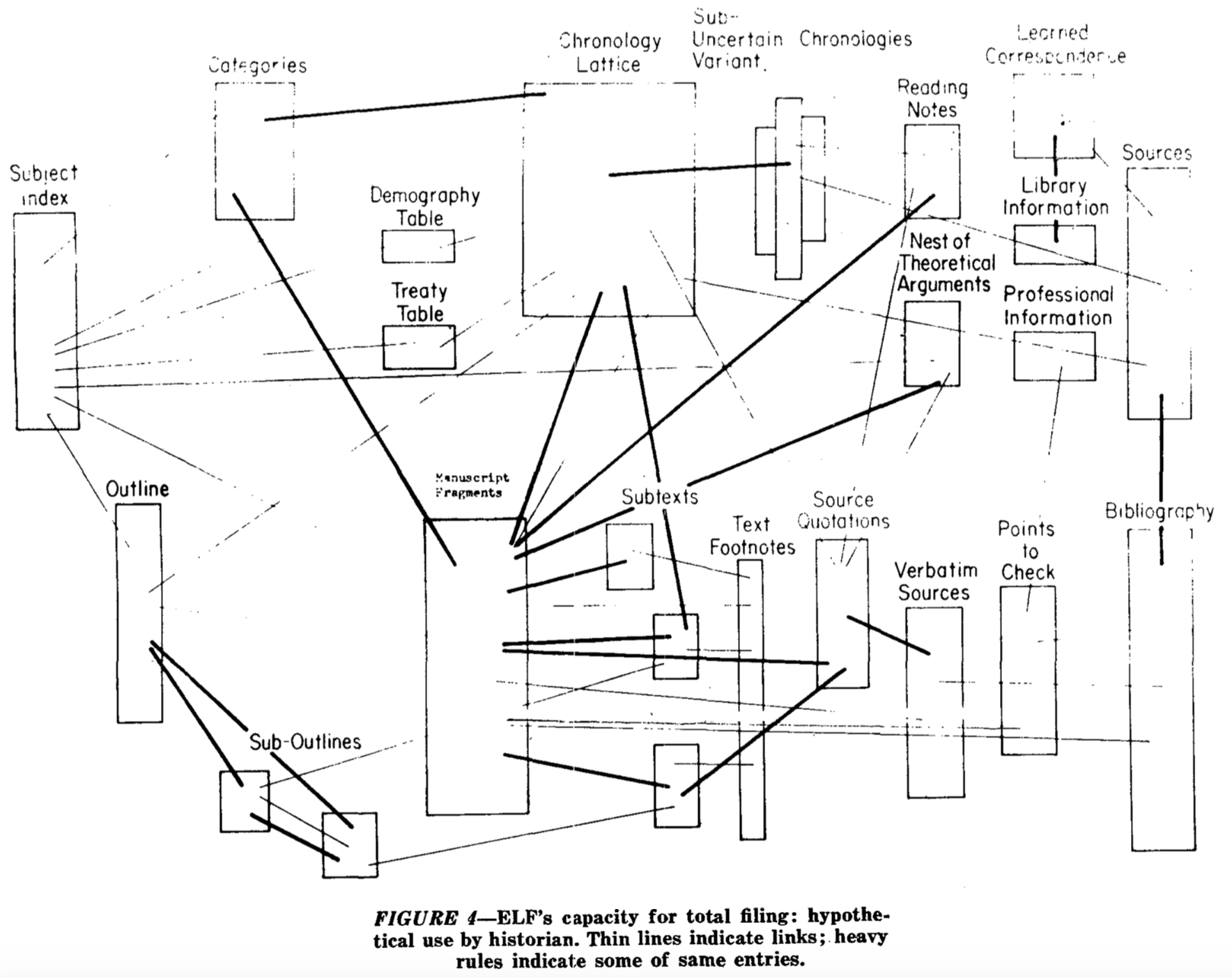
T. H. Nelson in A File Structure for The Complex, The Changing and the Indeterminate:
- “capacity for intricate and idiosyncratic arrangements, total modifiability, undecided alternatives, and thorough internal documentation”
- “acts like a multifarious, polymorphic, many-dimensional, infinite blackboard”
- “card file, notebook, index tabs, edge-punching, file folders, scissors and paste, graphic boards, index-strip frames, Xerox machine and the roll-top desk”
- “many revision processes before they are finished. Intellectually they are pondered juxtaposed, compared, adapted, transposed, and judged; mechanically they are copied, overwritten with revision markings, rearranged and copied again”
- “different categories of personal notes, separate drafts, outlines and master indices”
- “niggling complications, hidden passageways, and lurking, detailed interlocks, restrictions, specializations, provisos”
- “The ELF has three elements: entries, lists and links. An entry is a discrete unit of information designated by the user. A list is an ordered set of entries designated by the user. A given entry may be in any number of lists. A link is a connector, designated by the user, between two particular entries which are in different lists… An entry in one list may be linked to only one entry in another list.”
- “historical trails or associative (Bush) trails through documents, business correspondence, belles-lettres, case law, treaties, scholarly fields and history, and the mixture of trail with categorical filing”
- “rectangular arrays, lattices and more intricate configurations”
- “stored, displayed, taken apart for examination, and corrected, updated, or modified”
- “outline, suboutline, draft, subdraft, summary, commentary and source list”
- “incorporating Folios, bowdlerizations, satires and all critical commentary”
- “interrelations of possibilities, consequences, and strategic options”
- “Let me introduce the word “hypertext” to mean a body of written or pictorial material interconnected in such a complex way that it could not conveniently be presented or represented on paper.”
Peirce’s Recursive Trichotomies
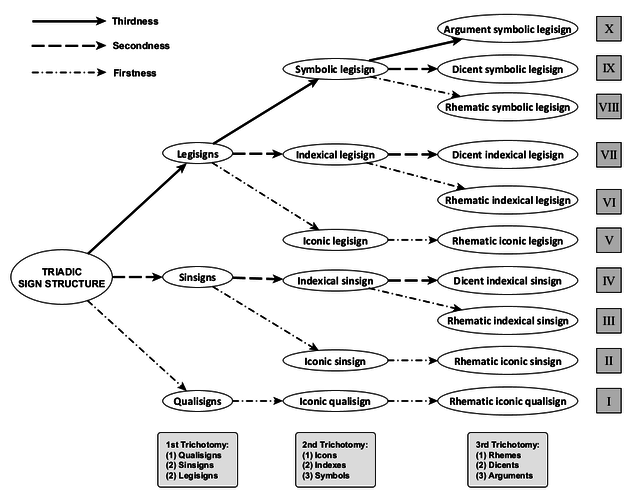
C. S. Perice reminds me of Leibniz though Peirce’s monadology is trivalent semiotics. T. Nellhaus discusses the self-branching process of Perice’s categories in an interesting post:
- “‘the map itself will be portrayed in the map, and in this map of the map everything on the soil of the country can be discerned, including the map itself with the map of the map within its boundary. Thus there will be within the map a map of the map, and within that a map of the map of the map and so on ad infinitum’. (EP 2.162)”
- “Peirce next applies the concepts of the categories and their degenerate forms to semiotics, tying Firstness to icons, Secondness to indexes, and Thirdness to symbols, and then elaborating on the iconic element of indexes and the iconic and indexical elements of symbols. He adds, significantly, that “The Symbol, or relatively genuine form of Representamen, divides by trichotomy into the Term, the Proposition, and the Argument” (EP 2.164).”
- “in “Nomenclature and Divisions of Triadic Relations, as Far as They Are Determined,” he presented the theory that there are three trichotomies: (1) Qualisigns, Sinsigns, and Legisigns; (2) Icons, Indexes, and Symbols; and (3) Rhemes, Dicents, and Arguments.”
- “If three recursions leads to ten classes of signs, then three recursions of three recursions, for a total of ten recursions (hence ten trichotomies) would mean there are 66 types of signs—which was his claim (EP 2.481).”
- “‘the six trichotomies, instead of determining 729 classes of signs, as they would if they were independent, only yield 28 classes; and if, as I strongly opine (not to say almost prove) there are four other trichotomies of signs of the same order of importance, instead of making 59,049 classes, these will only come to 66.’ (EP 2.481)”
The Seven Tools of Causal Inference.
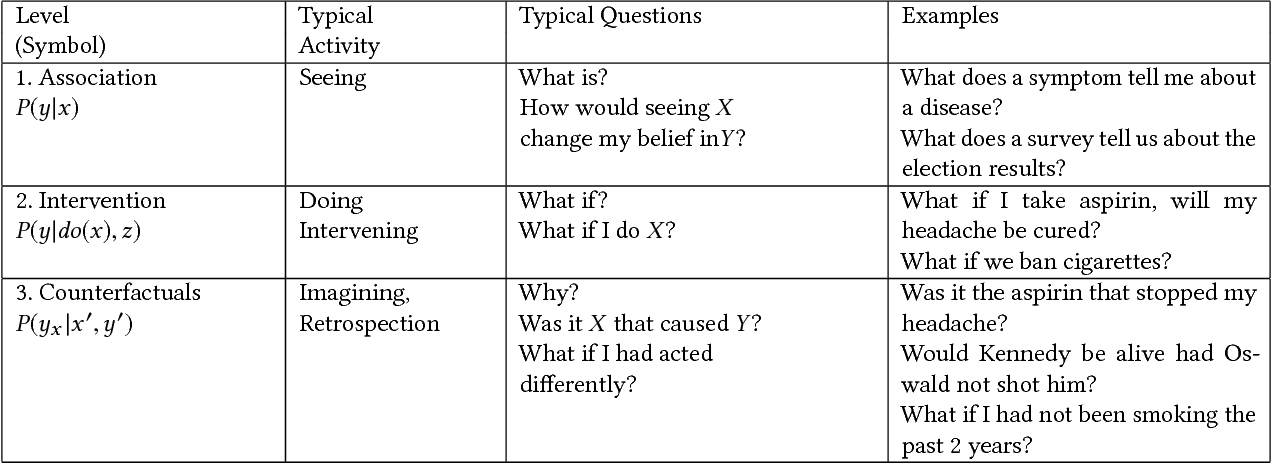
Judea Pearl’s paper establishes a causal hierarchy (association, intervention, counterfactual), and outlines seven tasks accomplished by the Structural Causal Models (composed of graphical models, structural equations, and a couterfactual and interventional calculus):
- Encoding causal assumptions
- The control of confounding
- The algorithmization of counterfactuals
- The assessment of direct and indirect effects
- Robustness to change in environmental conditions
- Recovering from missing data
- Causal discovery
Performance, Observation, Methodology
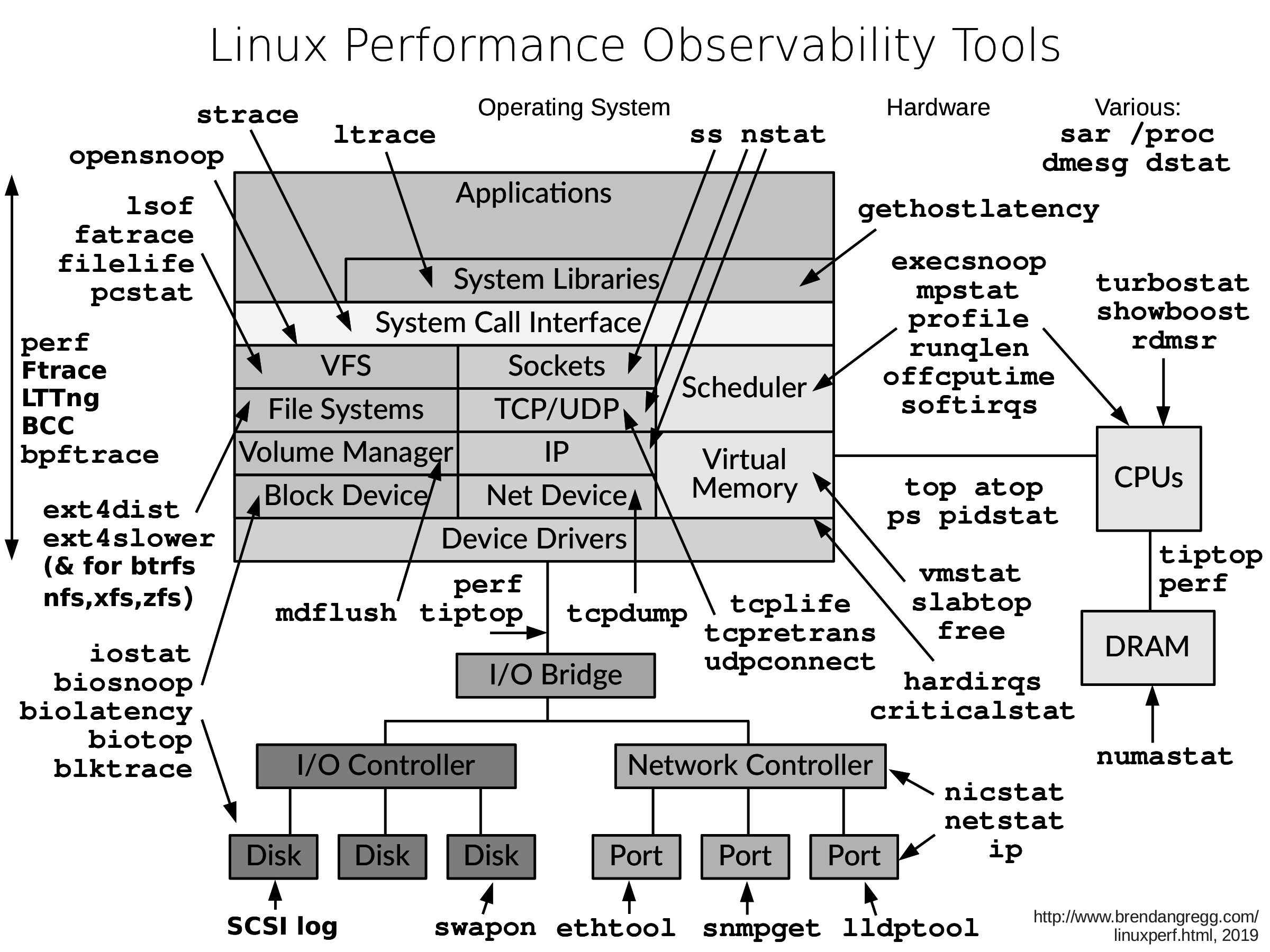
In laying out his argument for Performance Analysis Methodology, Brendan Gregg calls for understanding system behavior more efficiently by mapping out the architecture of a system, tagging substructures with observational tools, and relating observations using architectural constraints.
- Anti-Methodologies:
- Blame-Someone-Else
- Streetlight
- Drunk Man
- Random Change
- Passive Benchmarking
- Traffic Light
- Methodologies
- Ad Hoc Checklist
- Problem Statement
- Read-The-Fine-Manual (RTFM)
- Scientific Method
- Observe-Orient-Decide-Act Loop
- Drill-Down Analysis
- Process of Elimination
- Time Division
- 5 Whys Performance
- By-Layer Method
- Tools Method